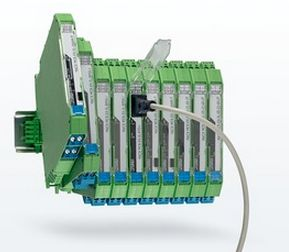
Safely isolate, condition, filter, and amplify: MACX Analog offers comprehensive solutions for analog signal processing.

Save planning and operating costs with MACX Analog signal conditioners by combining high signal flexibility with safe isolation and SIL evaluation.
Choose the right MACX Analog signal conditioner for your application:
Analog IN/OUT
Temperature, potentiometers, limit values
Digital IN